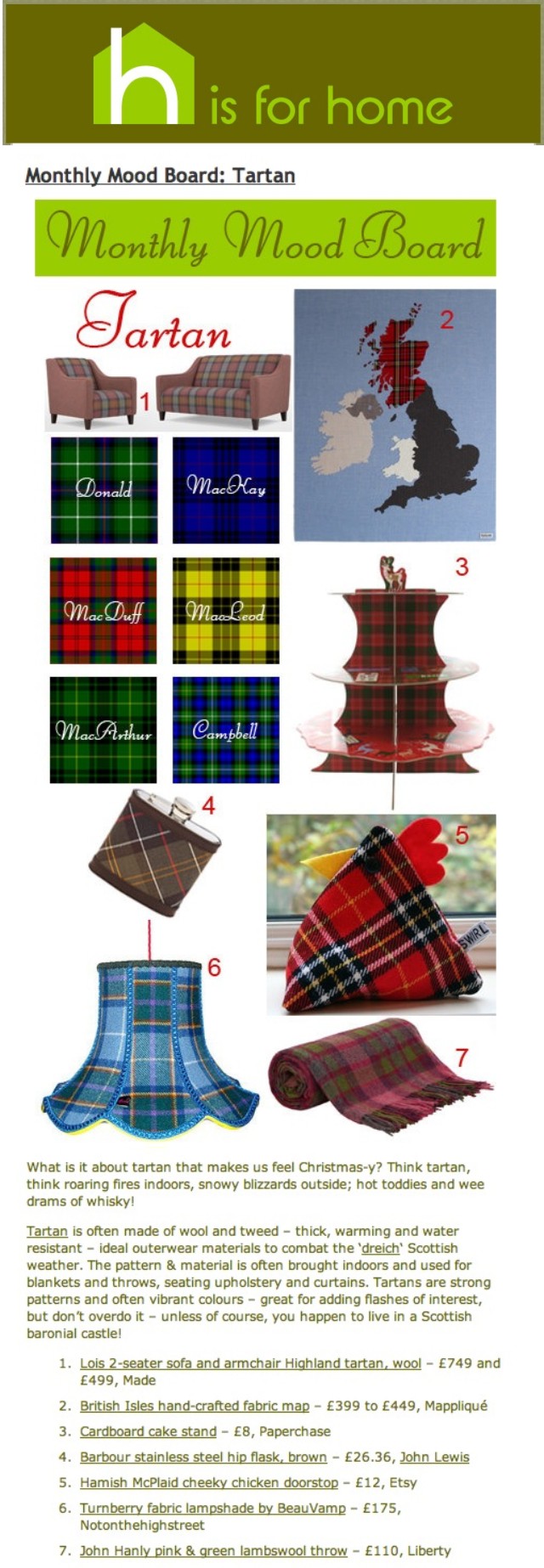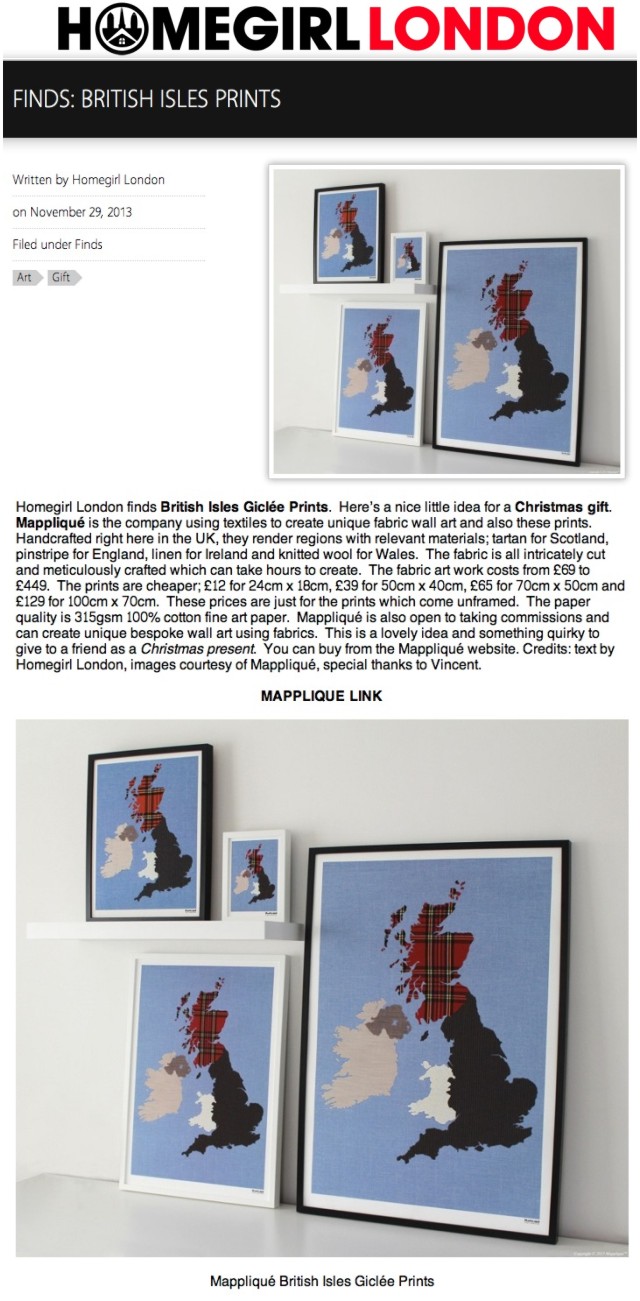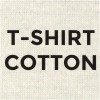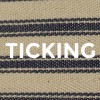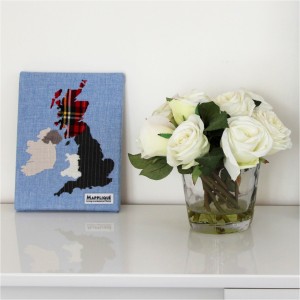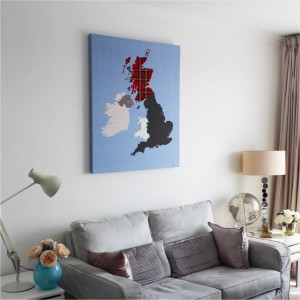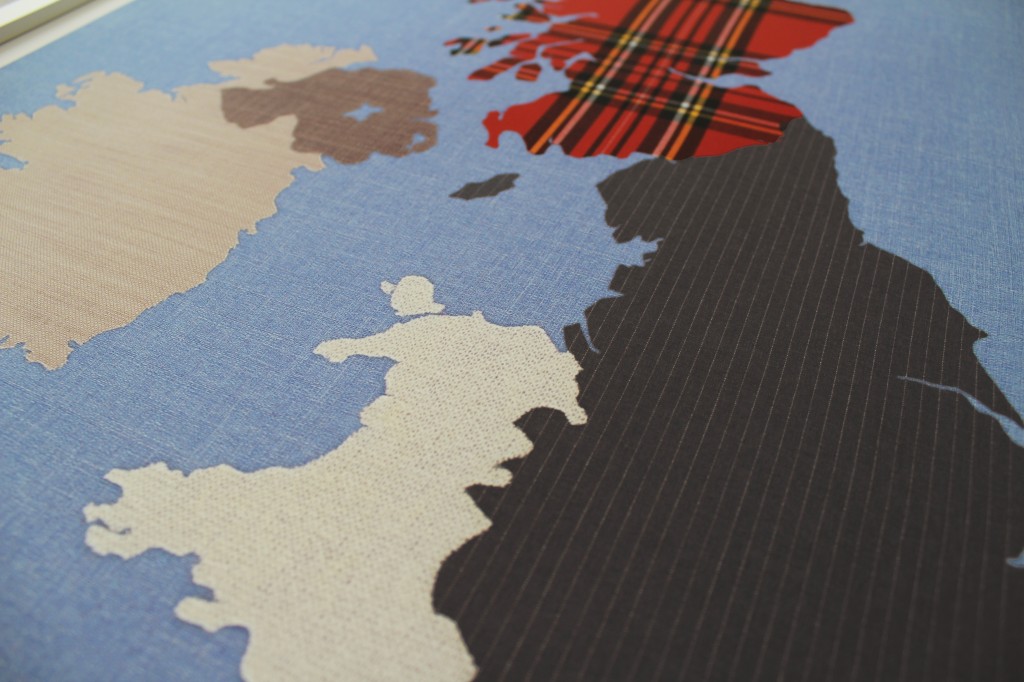H is for Home
The 100x70cm Fabric Map of the British Isles sits alongside tartan items on their Monthly Mood Board. The British Isles Fabric maps are also available as unframed reproduction giclée prints to fit standard picture frames.
Click on the clipping to go to the site or click here.
Homegirl London
They’ve kindly spotlighted Mappliqué wall art in their “FINDS” section as a great Christmas gift.
Click on the clipping to go to the site or click here.
Say HEY! to the USA
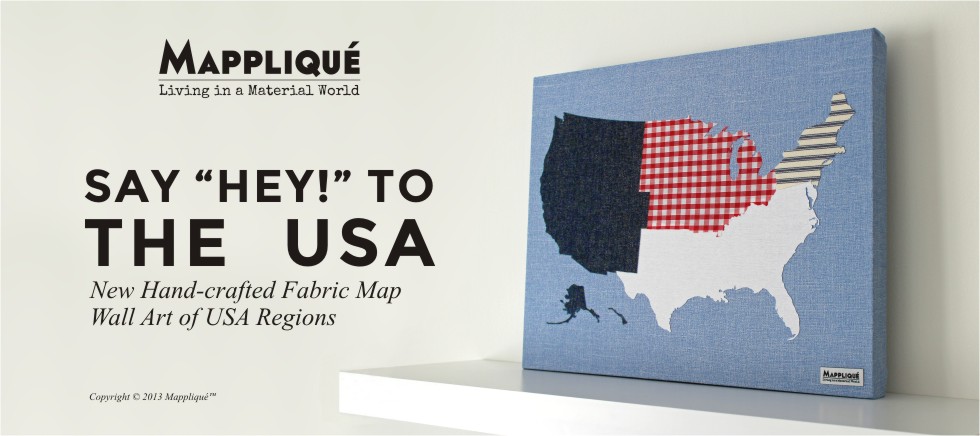
Mappliqué is pleased to release the second region of fabric art and it couldn’t be more appropriate on the occasion of Thanksgiving Day.
Following the first release of the British Isles pieces, the USA Regions map is a fabric slice of pure Americana.
The West is represented with denim. The fabric may have been invented in France, but it took the workwear of Levi Strauss and the iconic cowboys of the Wild West to drive the fabric into the heart of America’s cultural identity. From the Gold Rush to James Dean, denim has become a true American phenomenon. Each fabric map is made-to-order with your choice of dark indigo denim or paler, washed, “blue jeans” denim.
The Mid-West is strongly represented by yet another American icon: gingham. Like denim, the fabric was originally imported but it was the farmsteads across the “belts” of the mid-west (the corn belt, the grain belt, etc) that turned gingham into such an iconic American textile. It was only natural that Kansas-based Dorothy in The Wizard of Oz would wear a gingham dress. From diner tablecloths to Doris Day, gingham represents the wholesome, milk-fed, farm-grown region of “America’s breadbasket”.
The South must be represented by cotton, and particularly t-shirt cotton. It was the American Navy, with headquarters based in Virginia, that turned the humble undergarment into outerwear by issuing t-shirts to sailors in 1913. In “A Streetcar Named Desire”, set in New Orleans, Marlon Brando cemented the humble white tee as one of the most popular pieces of clothing across the world. Apart from the historic plantations across the whole of the South in the past, Texas is currently the largest producer of cotton in the USA to this day.
For The North-East, mattress ticking is the natural choice, which is ironic for the region that contains the city that never sleeps. The region has a rich history of textile production with numerous mill towns weaving hardy ticking fabrics which endure to this day. What was once a practical and hard-wearing fabric, the distinctive striped cotton has been repurposed for accessories and upholstery in the typical “New England” coastal-themed interior.
Christmas Postal Dates

If you’re planning to order a gift to be shipped overseas, don’t miss out on ordering in time.
Ideal for ex-pat family and friends as a reminder of the “homeland”, as well as those based in the British Isles, the giclée prints are in stock and ready for immediate shipping, but please allow 10 days for the hand-crafted fabric maps to be made to order.
Here’s a handy guide for key dates to order by, depending on destination.
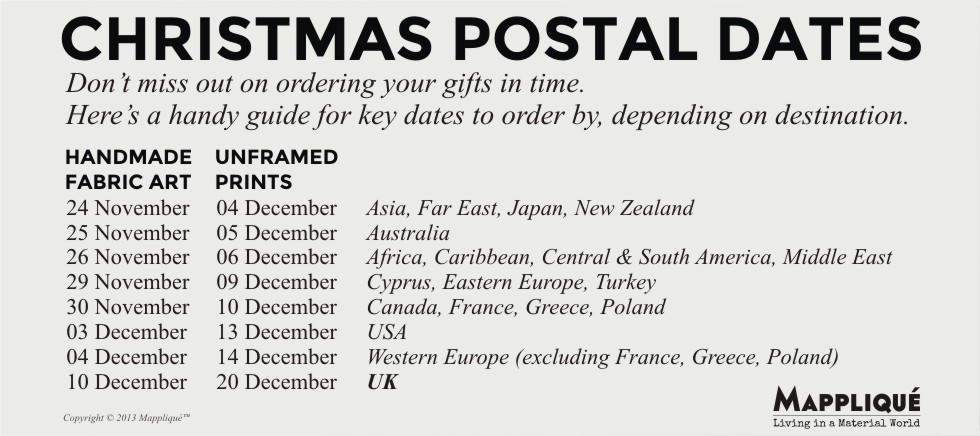
Welsh Wool

Wales is famous for its green fields dotted with white sheep and it’s these adorable fluffy creatures that have provided Welsh folk with clothing and a woollen industry for centuries.
Official records don’t go back in time far enough to document when the Welsh first started producing wool, but it is thought that sheep were first brought to the Principality by Romans. Sheep provided Wales with a major source of income from the 13th Century onwards when there was domestic carding, spinning, and cloth weaving or knitting.
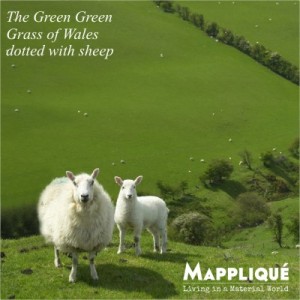 Wales had strong trade with England, supplying woollen yarn and cloth through the 15th Century, and by the 16th Century, Welsh wool was exported to Europe and saw town guilds formed around the growing industry.
Wales had strong trade with England, supplying woollen yarn and cloth through the 15th Century, and by the 16th Century, Welsh wool was exported to Europe and saw town guilds formed around the growing industry.
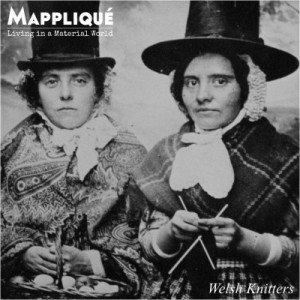 New machinery industrialised the process of woollen yarn and cloth production which saw large mills built to house equipment, but thankfully a hand-made, domestic wool-making tradition persisted.
New machinery industrialised the process of woollen yarn and cloth production which saw large mills built to house equipment, but thankfully a hand-made, domestic wool-making tradition persisted.
There are still some Welsh factories that survive to this day producing their own ranges of luxurious woollen items, such as blankets and rugs, and the yarn from Welsh Mountain sheep is highly praised by knitters and crafters.
It’s estimated that there are over 11 million sheep across Wales today, dotting the verdant landscape and continuing the important cultural significance of wool in Wales.
Wool is a sustainable and naturally renewable fibre (the wool fleece regrows annually) with ideal qualities for keeping comfortably warm (insulating, cosy, breathable, washable) so it’s no wonder that wool will always be popular for clothing and home textiles.
BRITISH ISLES
Choosing knitted wool to represent Wales in the fabric map of the British Isles was the natural choice. Wales is famous for it’s rolling valleys and fields dotted with flocks of adorable fluffy sheep so it’s only natural that the principality is represented with knitted ivory wool.
 Mappliqué – Mapplique.com
Mappliqué – Mapplique.com